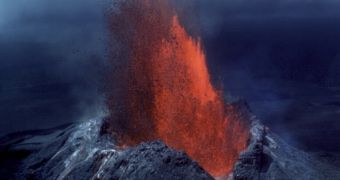Up until recently, it was believed that the volcano-climate relationship only went one way. Thus, most people agree that, once a volcano erupts and releases significant amounts of sulfur dioxide into the air, the weather is bound to cool down to a certain extent.
This phenomenon happens because of a very simple reason: sunlight has a tougher time reaching the earth, Oil Price explains.
However, a new study carried out by geologists working with the GEOMAR Helmholtz Centre for Ocean Research in Kiel argues that shifts in global weather conditions can also influence the way in which active volcanoes across the world behave.
In other words, global warming can foster volcanic eruptions.
The scientists who looked into this issue explain the situation as follows: during an ice age, most of the water housed in seas and oceans turns into ice and builds up on land.
This basically means that the continents find themselves compressed by all the extra weight now sitting on top of them.
However, once this period of extreme cold comes to an end and the ice starts to melt, said extra weight makes its way back into seas and oceans.
As a result of these climate shifts' toying with the pressure applied on the continents' surface and on the sea floor on a regular basis, the magma gets agitated and sooner or later volcanic eruptions start taking place.
Although this study focused on the Pacific Ring of Fire and its responses to an ice age's settling in or coming to an end throughout the past million years, there are other scientists who argue that man-made global warming might also translate into volcanoes' erupting ever more frequently, primarily due to the melting of the Arctic ice and rising sea levels.
The findings of this study linking climate change to volcanic eruptions were published in the scientific journal Geology.

 14 DAY TRIAL //
14 DAY TRIAL //